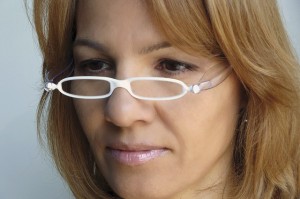Choices to Replace Your Cataract-Clouded Lenses
 Cataracts are common. In fact, they’re the most common cause of vision loss in people over 40 and are the principal cause of blindness worldwide. In the U.S., it’s estimated that 30 million people over the age of 40 will have cataracts by the year 2020.
Cataracts are common. In fact, they’re the most common cause of vision loss in people over 40 and are the principal cause of blindness worldwide. In the U.S., it’s estimated that 30 million people over the age of 40 will have cataracts by the year 2020.
Since the only way to treat cataracts is to remove your cloudy lenses, you’ll need to consider what type of intraocular replacement lenses (IOL) you want. Each option has different characteristics in the range of vision improvement they provide, not only clearing cloudy vision, but also addressing issues such as astigmatism and presbyopia.
Here are your options.
Multifocal lenses
As their name implies, these intraocular replacement lenses function more like your natural lenses, allowing you to focus on all distances. The original cataract replacement lenses were called monofocal, meaning they were only able to provide excellent vision at one point of focus, usually distance vision. This meant the person would still require glasses for the other ranges of distance. Multifocal lenses allow the patient to see things at distance (watching TV, looking at distant vistas, driving), intermediate range (the bathroom counter, your car dashboard, faces in conversation), and near (reading, working on the computer). If you do extensive up close work or reading, you may need over-the-counted reading glasses, but otherwise multifocal lenses offer a wide range of great vision.
Toric lenses
Toric lenses replace your clouded cataract lenses, but also correct for astigmatism at the same time. People with astigmatism have trouble focusing at certain distances because their cornea has an oval shape, whereas a round shape is preferable. Before toric lenses were developed, IOLs were limited in their degree of improvement because they couldn’t correct for the astigmatism. That’s no longer the case.
Monofocal lenses
Standard, or monofocal, IOLs deliver one point of focus: close, mid-range, or distance. You can choose the distance you want your lenses to handle and then wear glasses for other distances.
Or you can choose what is called monovision. In monovision, the lens in your dominant eye is set for distance vision and you non-dominant eye is set for mid-range or near vision. This seems as if it would be a recipe for a continual headaches, but the brain adapts remarkably well, giving the patient a wider range of vision with less need for glasses.
At Millennium Park Eye Center, we’re experts at cataract replacement surgery. If you’ve noticed that your vision seems to becoming cloudy, it’s time to come see us. Call 312-996-2020 to make an appointment.
Category:


